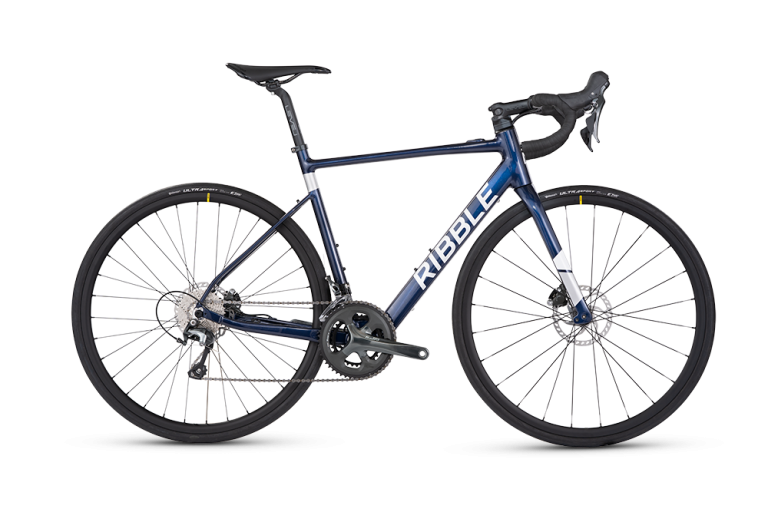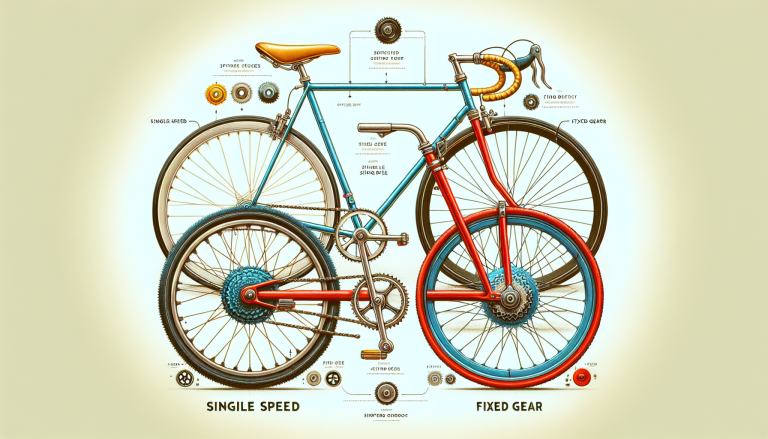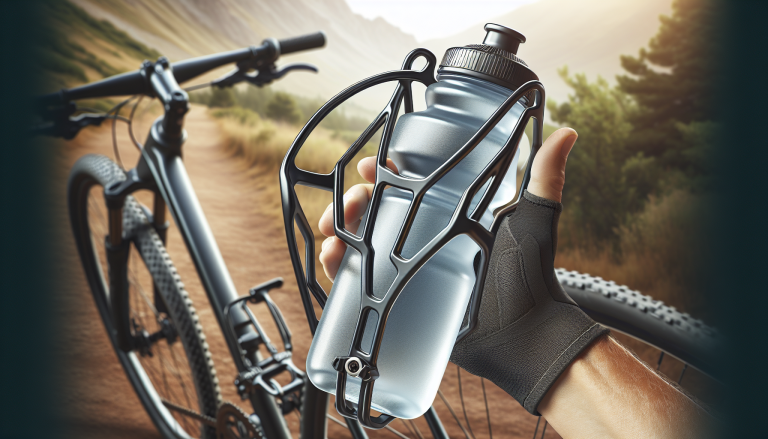Have you ever heard of a sportive but aren’t quite sure what it entails? Well, fret not, because this article aims to demystify the concept of a sportive and provide you with a clearer understanding of this exciting sporting event. Whether you’re an avid cyclist or someone who simply enjoys a good challenge, sportives offer a unique experience that combines the thrill of competitive racing with a friendly, inclusive atmosphere. So, join us as we uncover the ins and outs of sportives, from the routes to the camaraderie, and everything in between. Let’s dive into the world of sportives and discover what makes them so exhilarating! A sportive is a non-competitive cycling event that allows riders of all levels to challenge themselves and experience the joy of cycling. It offers a unique opportunity for cyclists to push their own limits, enjoy the camaraderie of fellow riders, and explore scenic roads and trails. Sportives have gained widespread popularity in recent years, attracting thousands of participants worldwide. In this article, we will delve into the history, characteristics, organizational structure, and different types of sportives to give you a comprehensive understanding of this vibrant cycling phenomenon.
Table of Contents
ToggleHistory of Sportives
Sportives have a rich history that can be traced back to the early 20th century in Europe. These events were initially organized as endurance rides, aiming to test the physical and mental capabilities of cyclists. Over time, sportives evolved into mass participation events that catered to a wider range of cyclists, from beginners to seasoned riders.
The influence of professional cycling has played a significant role in the development of sportives. As people’s interest in cycling grew, they sought to experience the thrill and challenge of riding on the same roads as professionals. Many famous sportives were born out of this desire, offering enthusiasts the chance to ride iconic routes and feel a sense of connection to their cycling heroes.
Characteristics of a Sportive
A key characteristic of a sportive is its non-competitive nature. Unlike bike races, which focus on speed and tactics, sportives prioritize personal achievement and enjoyment over winning. Participants can ride at their own pace, with no pressure to outperform others. This inclusive approach makes sportives accessible to cyclists of all abilities, fostering a welcoming and supportive environment.
Distance and difficulty vary across sportives, catering to different riding preferences and fitness levels. From shorter rides of 40-50 kilometers to epic challenges spanning over 200 kilometers, there is a sportive for every type of rider. Difficulty levels also range from relatively flat routes to grueling ascents and technical descents, ensuring that riders can find an event that matches their skills and goals.
Time limits and cut-off points are common in sportives to maintain a structured schedule and ensure the safety of participants. Riders are expected to complete the course within a specified time frame, and there are designated points along the route where a rider must reach by a certain time. This adds an element of motivation and urgency, encouraging participants to push themselves and maintain a steady pace.
Route markings and support are crucial aspects of a sportive. Organizers ensure that the course is well-marked with signage and road markings, minimizing the chances of participants getting lost. Additionally, sportives often provide support vehicles stationed at key points to assist riders with mechanical issues or medical emergencies. This reassurance allows participants to focus on their ride and enjoy the experience.
Feed stations and mechanical assistance are essential components of a sportive, providing riders with fuel and support throughout their journey. Feed stations, strategically placed along the route, offer a variety of snacks, energy bars, and drinks to keep riders fueled and hydrated. On-site mechanics are also available to help with any bike-related issues, ensuring that participants can tackle challenges without worrying about equipment problems.
Timing and rankings may be available in some sportives, but they are not the primary focus. While timing allows participants to track their personal performance, sportives emphasize the overall experience rather than individual rankings. This aspect contributes to the friendly and supportive atmosphere, where riders cheer each other on and celebrate collective achievements.
Organizational Structure of a Sportive
Sportives are meticulously organized events that require careful planning and coordination. Event organizers play a crucial role in ensuring a smooth and enjoyable experience for participants. From selecting the route to managing logistics, their efforts contribute to the success of the event.
The registration process is the first step for participants to secure their spot in a sportive. Online registration platforms are commonly used, allowing riders to sign up, choose their desired distance, and pay the entry fee. Limited spots are often available, so early registration is recommended to avoid disappointment.
Event logistics and planning involve various aspects, including securing permits, arranging road closures (if necessary), and coordinating with local authorities and agencies. Organizers also work closely with volunteers to ensure that all necessary resources, such as signage, feed stations, and support vehicles, are in place.
Safety measures and medical support are of utmost importance in sportives. Participants’ well-being is a top priority, and organizers take several precautions to ensure a safe environment. This includes briefing riders on safety protocols, providing clearly marked emergency contact numbers, and having medical professionals on standby in case of accidents or health emergencies.
Volunteers and staff play a significant role in ensuring the smooth operation of a sportive. From registration and check-in to manning feed stations and providing support along the route, their dedication and hard work contribute to the overall positive experience for participants. Their enthusiasm and friendly demeanor help create a welcoming atmosphere that is characteristic of sportives.
Types of Sportives
Sportives come in various forms, catering to different cycling disciplines and terrain preferences. Let’s explore some of the most common types of sportives:
Road Sportives
Road sportives are the most prevalent type of sportive, offering participants the chance to ride on paved roads and explore scenic routes. These events are often organized on open public roads, allowing cyclists to experience the thrill of riding in a controlled yet authentic setting. Road sportives can range from short joyrides to challenging century rides, showcasing the diversity of road cycling.
Popular road sportives in different countries
Tour de France Etape du Tour – France RideLondon-Surrey 100 – United Kingdom Gran Fondo Campagnolo – Italy Vätternrundan – Sweden Ronde van Vlaanderen Cyclo – Belgium
Challenges and notable routes
Road sportives present a variety of challenges, including hilly profiles, technical descents, and long distances. Some iconic routes include the grueling climbs of Mont Ventoux in France, the breathtaking landscapes of the Stelvio Pass in Italy, and the picturesque coastal roads of the Amalfi Coast.
Off-Road Sportives
Off-road sportives, also known as gravel or adventure sportives, have gained significant popularity in recent years. These events take place on unpaved roads, gravel paths, and dirt trails, offering participants a unique cycling experience. Off-road sportives allow riders to explore remote and scenic areas that are often inaccessible by traditional road bikes.
Introduction to off-road sportives
Off-road sportives provide an opportunity to escape the hustle and bustle of city life and immerse yourself in nature. Gravel paths, forest trails, and fire roads create a sense of adventure and challenge, making these events perfect for those seeking a different kind of cycling experience.
Different disciplines of off-road sportives
Off-road sportives encompass various disciplines, including gravel grinding, cyclocross, and mountain biking. Gravel grinding involves riding on gravel paths, mixed terrain, and backcountry roads. Cyclocross events take place on a closed circuit featuring grass, mud, and obstacles. Mountain biking sportives focus on off-road trails and tracks, often combining technical climbs and thrilling descents.
Equipment and preparation for off-road sportives
Off-road sportives require specific equipment and preparation. Gravel bikes, with wider tires and more durable frames, are ideal for gravel grinding and adventure riding. Cyclocross bikes, built for off-road racing, are designed to handle tough terrain and obstacles. Mountain bikes, with their suspension systems and versatile tread patterns, excel in tackling challenging mountain trails.
Mountain Sportives
Mountain sportives attract thrill-seekers and climbers who relish the challenge of conquering steep ascents and navigating technical descents. These events are held in mountainous regions, offering participants stunning vistas and exhilarating riding experiences.
Unique challenges of mountain sportives
Mountain sportives present unique challenges due to the demanding terrain and elevation gain. Steep gradients, switchback climbs, and high-altitude weather conditions require riders to have a high level of fitness, technical skills, and mental resilience. The sense of accomplishment upon conquering a difficult mountain pass is unrivaled, making mountain sportives a favorite among experienced cyclists.
Famous mountain sportives worldwide
The Maratona dles Dolomites in Italy, the Marmotte Granfondo Alpes in France, and the La Etapa de la Vuelta in Spain are renowned mountain sportives that attract cyclists from around the globe. These events take participants through challenging mountain roads and passes, allowing them to experience the same epic climbs as professional cyclists.
Training and preparation for mountain sportives
Training for mountain sportives requires a focus on climbing, endurance, and strength. Long rides with sustained climbs, hill repeats, and interval training are essential to build the necessary fitness. Mental preparation is equally important, as the challenging nature of mountain sportives can push riders to their limits. Acclimatizing to higher altitudes, where applicable, is also crucial to cope with reduced oxygen levels.
Gravel Sportives
Gravel sportives combine the thrill of off-road riding with the versatile performance of gravel bikes. These events take participants on unpaved roads, gravel paths, and backcountry trails, offering a sense of adventure and exploration.
Definition and features of gravel sportives
Gravel sportives are characterized by their mixed terrain, challenging routes, and a relaxed, non-competitive atmosphere. Unlike road cycling, where speed and drafting play significant roles, gravel sportives prioritize the enjoyment of the journey and the rugged beauty of the surroundings.
Notable gravel sportives in different regions
Dirty Kanza in the United States, Groadinger Gravel Fondo in Canada, and Race the Sun in Australia are well-known gravel sportives that attract gravel enthusiasts from around the world. These events showcase breathtaking landscapes and provide participants with a taste of gravel riding on diverse terrain.
Gravel-specific equipment and training
Gravel bikes, with wider tires, lower gearing, and more robust frames, are specifically designed to handle the demands of gravel riding. Training for gravel sportives often involves a combination of road cycling and off-road riding, focusing on building endurance, handling skills, and adaptability to varying terrain and conditions.
Multi-Day Sportives
Multi-day sportives offer participants the opportunity to embark on a multi-stage cycling adventure. These events span several days, covering significant distances and exploring different regions, providing an immersive cycling experience.
Overview of multi-day sportives
Multi-day sportives are suitable for cyclists looking to challenge themselves both physically and mentally. They often include a variety of terrains, scenic routes, and cultural highlights. These events promote a sense of achievement and foster lasting friendships among participants.
Popular multi-day sportives
The Haute Route series, which includes events in the French Alps, Pyrenees, Dolomites, and Rockies, is renowned for its challenging routes and exceptional organization. The Raid Pyrenean in France and the Transcontinental Race across Europe are also highly regarded multi-day sportives that test participants’ endurance and resilience.
Logistics and challenges of multi-day sportives
Organizing multi-day sportives involves meticulous planning of logistics, accommodation, and route management. Participants need to ensure they have appropriate accommodations, meals, and support services throughout the duration of the event. The endurance required to participate in multi-day sportives, along with the mental and physical challenges, make them a rewarding and memorable experience for participants.
In conclusion, sportives provide an exciting and inclusive opportunity for cyclists of all levels to challenge themselves, explore stunning routes, and connect with fellow riders. The rich history, non-competitive nature, and diverse types of sportives make them a popular choice among cycling enthusiasts worldwide. Whether you prefer road cycling, off-road adventures, mountain challenges, gravel riding, or the thrill of multi-day adventures, there is a sportive out there waiting for you to experience its unique blend of camaraderie, achievement, and sheer cycling joy. So gear up, choose your adventure, and embark on a memorable ride that will leave you with lifelong memories and a deeper love for the sport.






